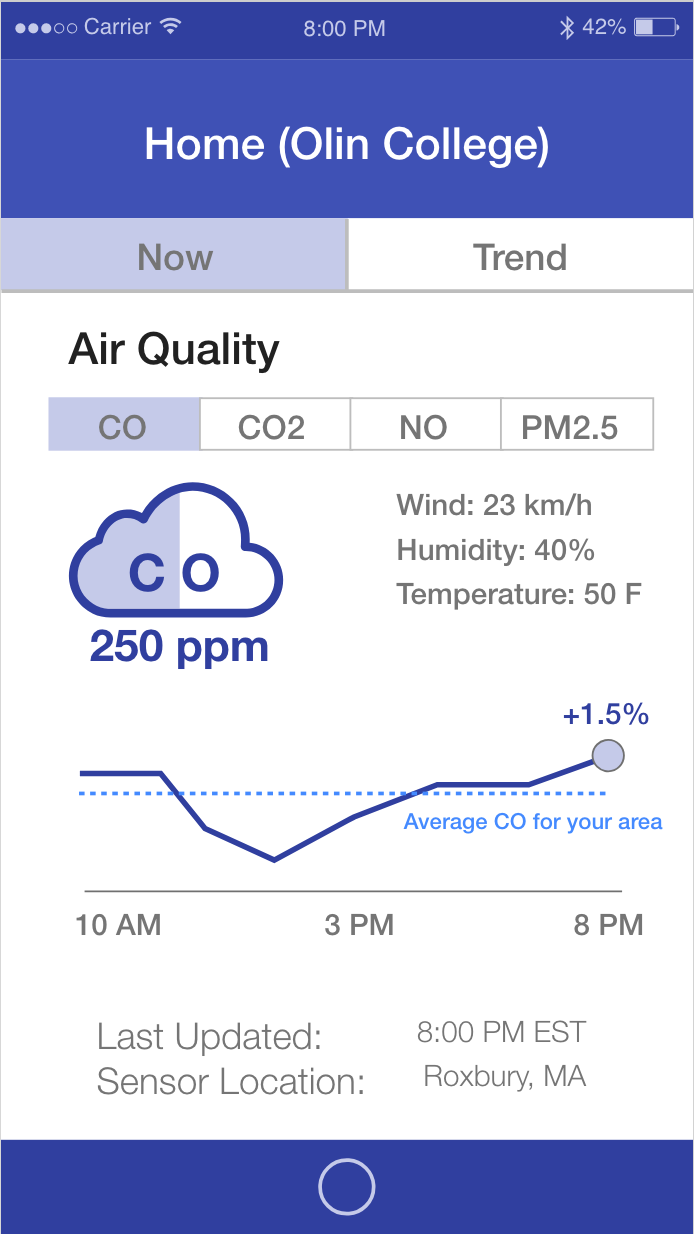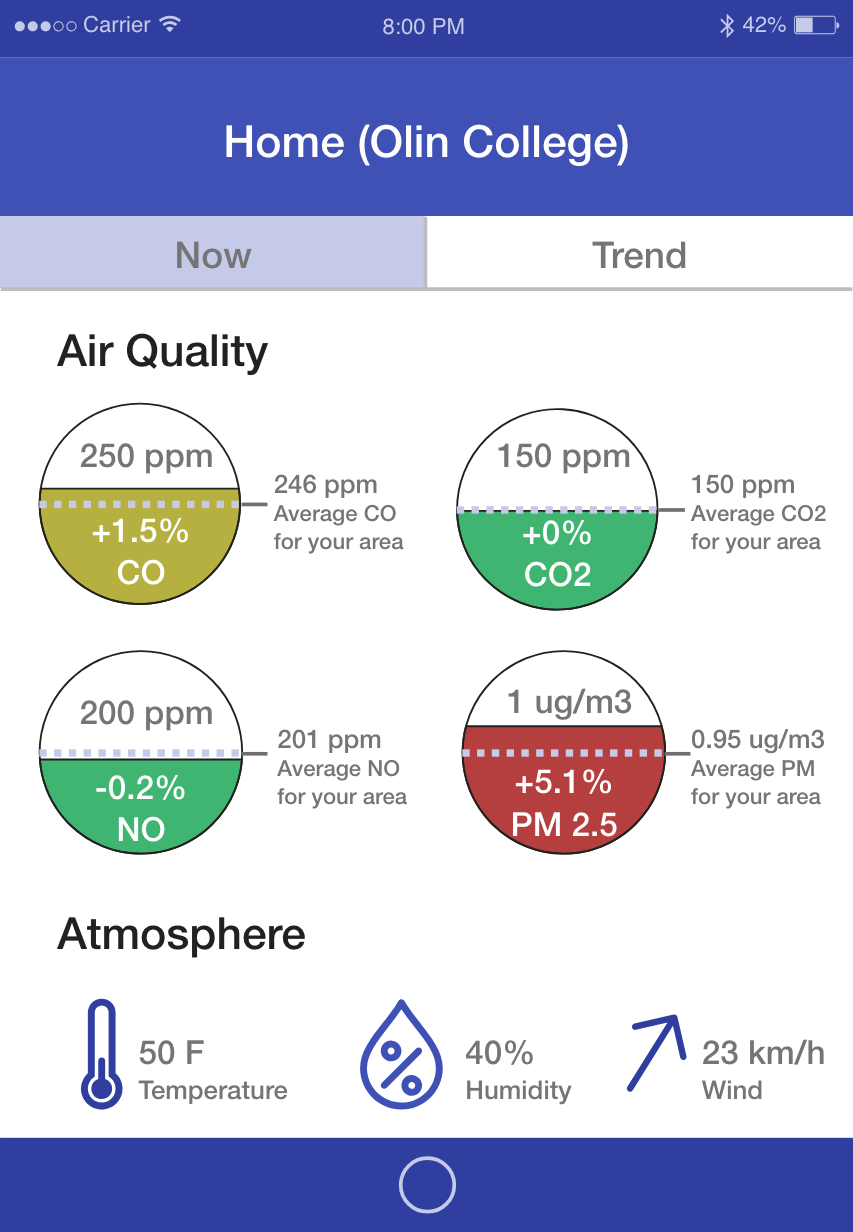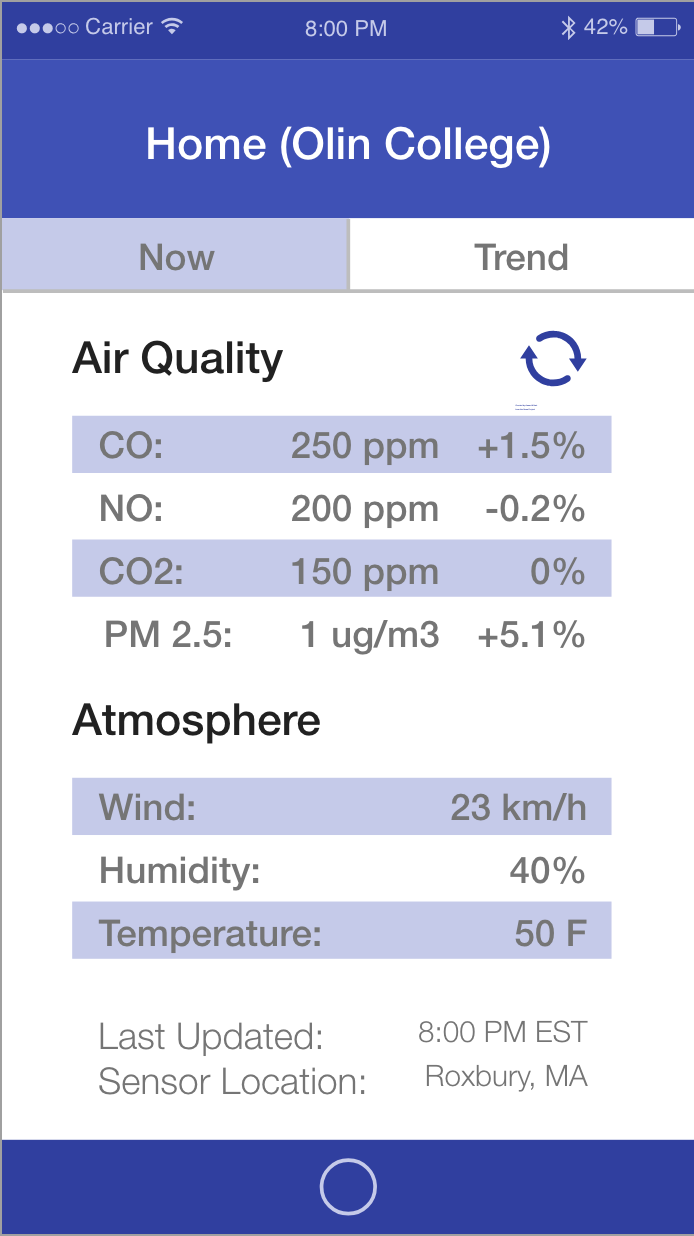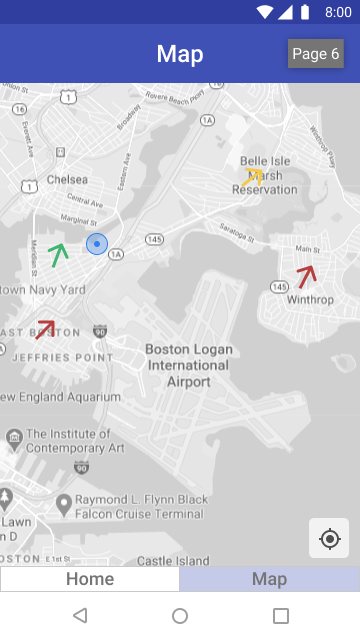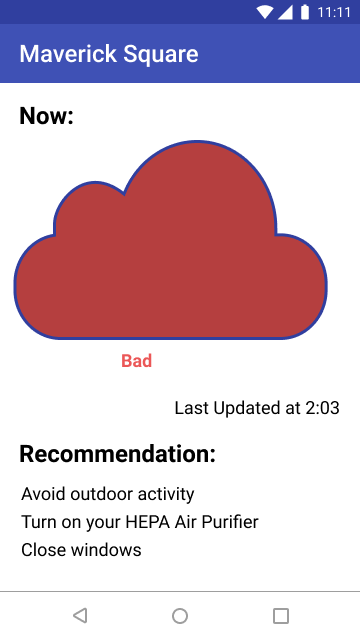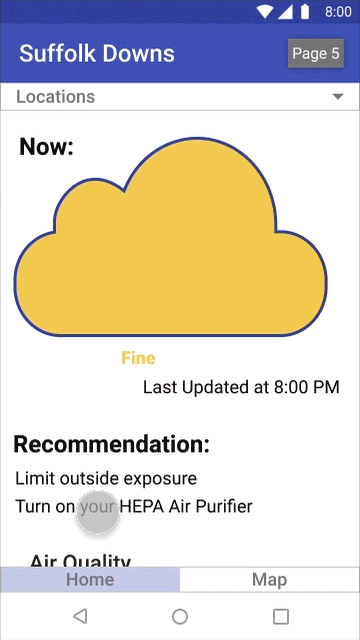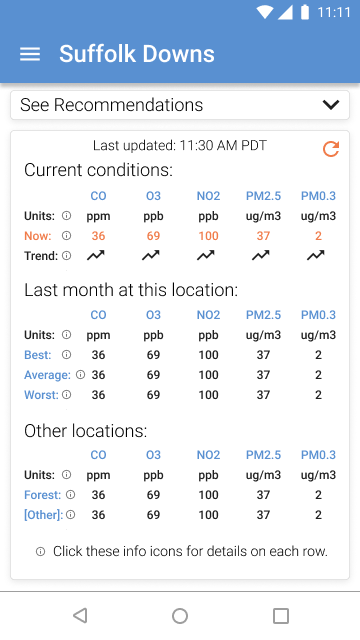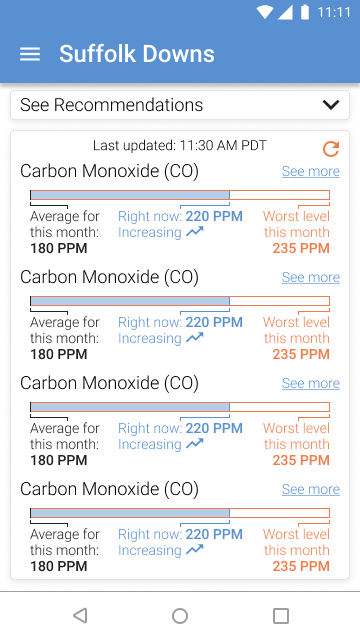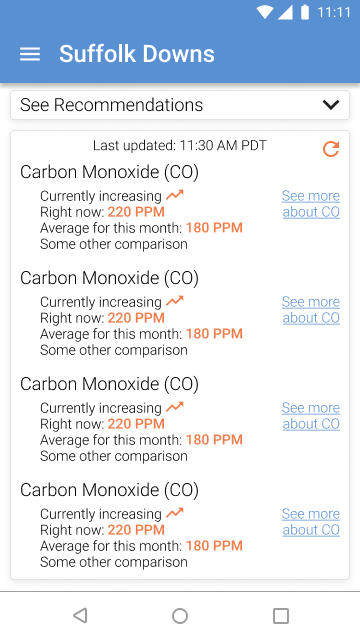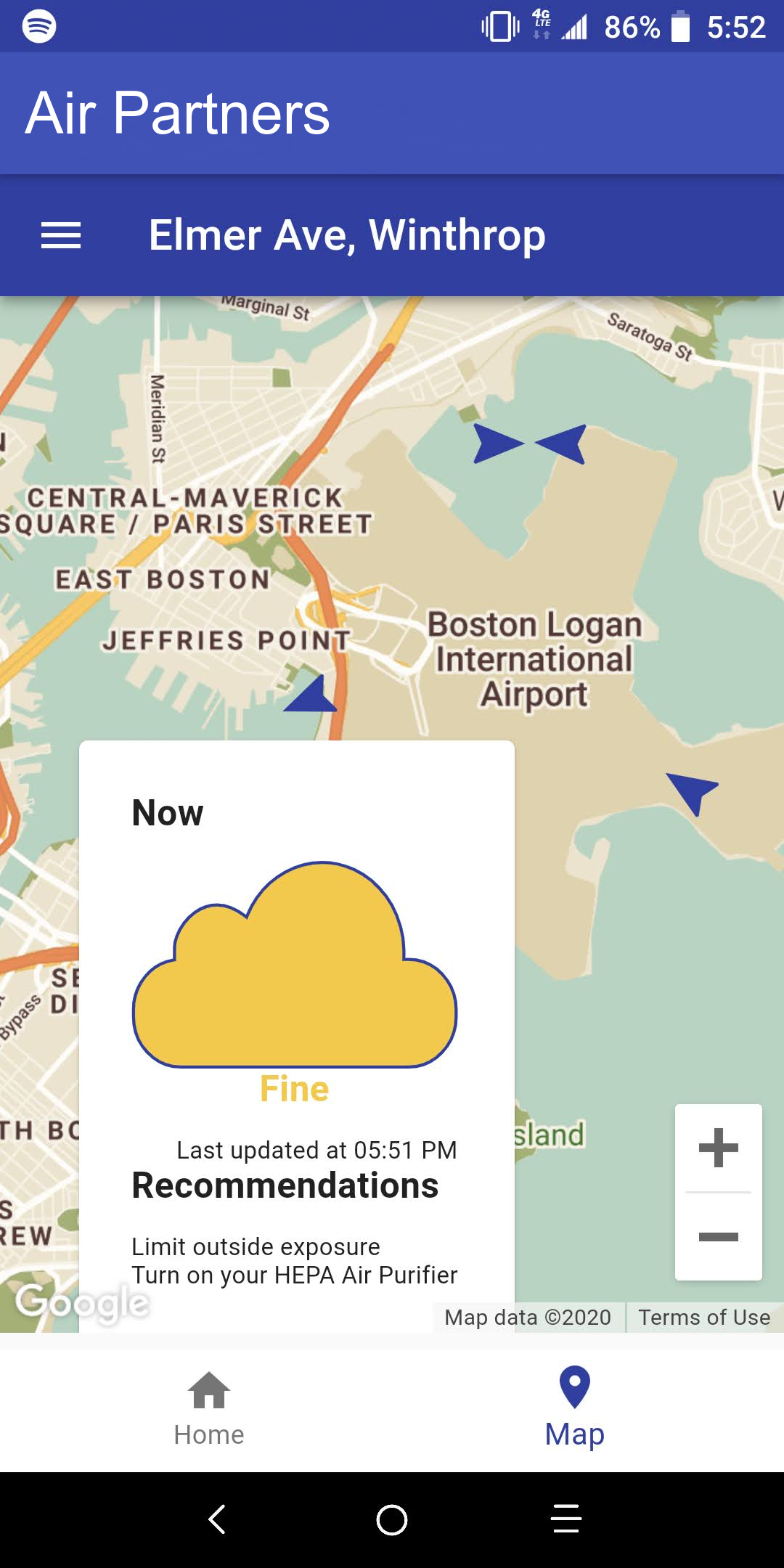Wizard of Oz testing is one of the most powerful UX design techniques I've encountered. It doesn't hurt that it's also super fun. The basic idea is that you can rapidly prototype many different things if you use yourself to fill in the gaps in functionality that a complete design would have. In the case of basic UI design, this looks like some paper wireframes that you manipulate as your users touch parts of the screen. However, you can quickly increase the complexity by using sticky notes and clear sheets to mimic things like dropdowns and modals. Since everything is on paper, edits and re-designs can be immediately co-created with users.
Before making a bunch of blind changes to our UI, we needed to get input from users. We wanted to utilize these existing wireframes as a platform for understanding how our users would interact with real-time air quality data. We, of course, interviewed them to understand them as people and their conceptions of air quality better before showing them the wireframes. Before heading out, we hypothesized that some users may be overwhelmed by looking at any data. Therefore, we quickly mocked this additional view (just as an experiment) to give clear actionable information without any data.
What we learned:
- Most users were overwhelmed by the views with numbers and graphs; although, some had a desire to learn how to interpret them.
- Everyone had a strong desire for recommendations about what to do.
- Many people reacted well to the at-a-glance view but at least one person felt more sure seeing the numbers.
